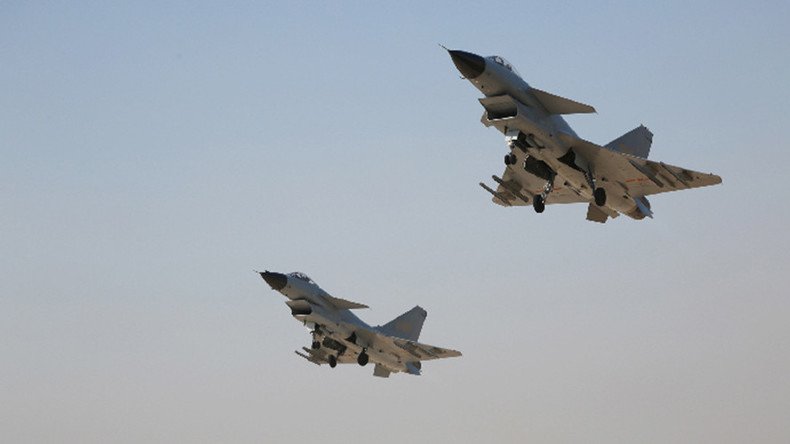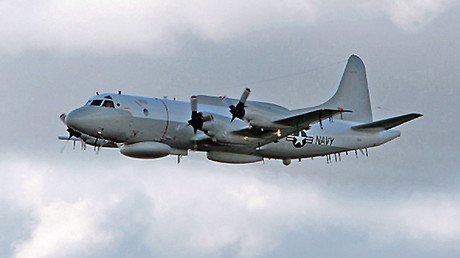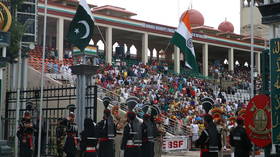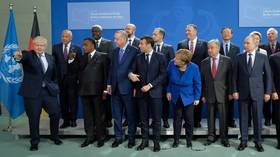Chinese interception of US spy plane ‘legal, necessary & professional’ – Beijing

The interception of a US spy plane by two Chinese jets over the Yellow Sea was “legal, necessary, [and] professional,” Beijing said, adding that such flights by Washington threaten China’s national security.
“Close-in reconnaissance by US aircraft threatens China's national security, harms Sino-US maritime and air military safety, endangers the personal safety of both sides' pilots and is the root cause of unexpected incidents,” Defense Ministry spokesman Ren Guoqiang said.
The actions of the Chinese jets’ pilots were “legal, necessary and professional” and conducted “in accordance with the law and the rules,” he added.
The statement comes after US officials told local media that an American surveillance plane was intercepted by two Chinese jets on Sunday.
A US EP-3 ARIES signals intelligence plane was flying about 140km south of the port city of Qingdao on the east coast of China, when it was approached by two Chinese J-10 interceptors, armed with air-to-air missiles.
One of the Chinese jets flew under the EP-3 and appeared 90 meters (295ft) in front of the US plane, causing the crew “to take evasive action to avoid collision,” according to one official.
The EP-3 Airborne Reconnaissance Integrated Electronic System (ARIES) is a version of the P-3 Orion spy plane.
US forces have recently stepped up their activity in the region, provoking China’s anger. Earlier in July, Beijing spoke out after two US long-range supersonic bombers flew over the disputed South China Sea.
China noted that it “resolutely opposes individual countries using the banner of freedom of navigation and overflight to flaunt military force and harm China’s sovereignty and security.”
Also in July, Beijing said Washington is damaging peace and stability in the South China Sea and is undermining China-US relations. The comments came a day after the ‘USS Stethem,’ a guided-missile destroyer, sailed near the disputed Paracel Islands in the region.
In May, two Chinese jets came close to a US P-3 Orion surveillance plane flying off the coast of China, the same day a US Navy ship was sailing near the Spratly islands, claimed by Beijing in the South China Sea.
READ MORE: ’Unsafe intercept’: US officials accuse China of buzzing spy plane
The majority of the South China Sea is claimed by Beijing, despite similar statements from Brunei, Malaysia, the Philippines, Vietnam and Taiwan.














